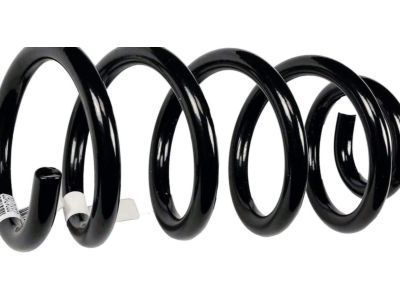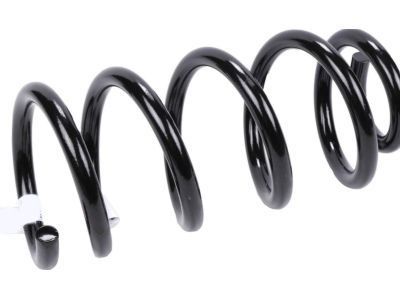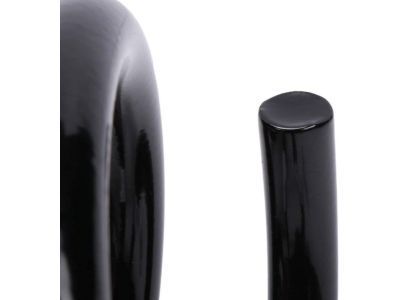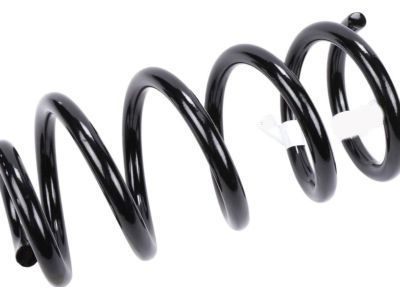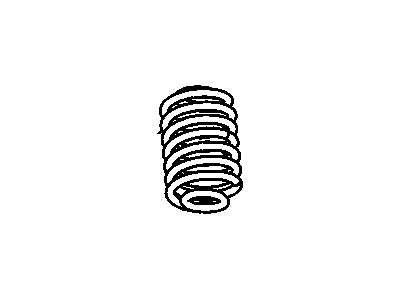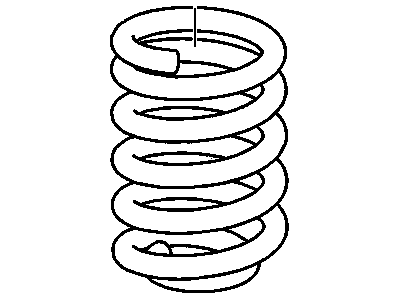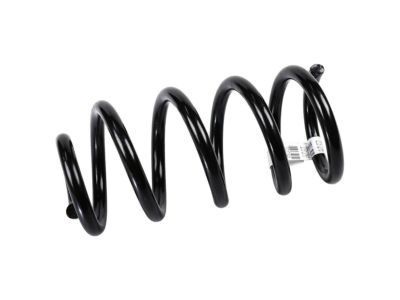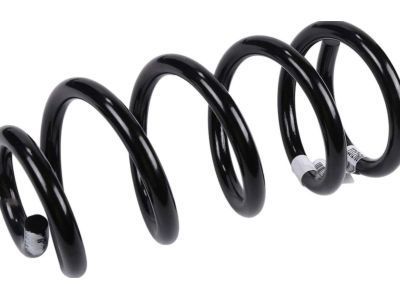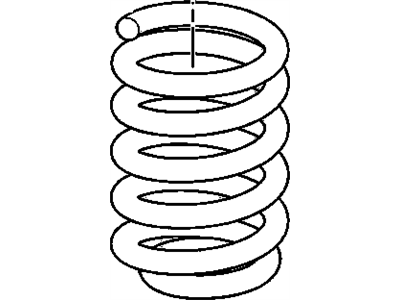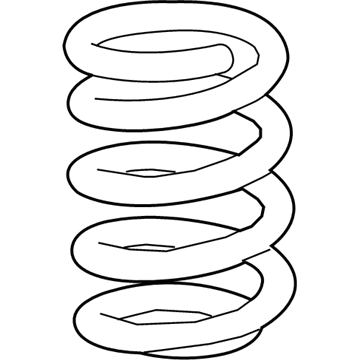
My Garage
My Account
Cart
Genuine Cadillac Escalade Coil Springs
Strut Spring- Select Vehicle by Model
- Select Vehicle by VIN
Select Vehicle by Model
orMake
Model
Year
Select Vehicle by VIN
For the most accurate results, select vehicle by your VIN (Vehicle Identification Number).
91 Coil Springs found
Cadillac Escalade Front Coil Spring
Part Number: 23312159$50.45 MSRP: $98.33You Save: $47.88 (49%)Ships in 1-2 Business DaysCadillac Escalade Rear Coil Spring
Part Number: 25783732$46.90 MSRP: $139.42You Save: $92.52 (67%)Ships in 1-2 Business DaysCadillac Escalade Front Coil Spring
Part Number: 23312165$34.82 MSRP: $103.55You Save: $68.73 (67%)Ships in 1-3 Business DaysCadillac Escalade Front Driver Side Coil Spring
Part Number: 25876861$112.49 MSRP: $202.68You Save: $90.19 (45%)Ships in 1-3 Business DaysCadillac Escalade Spring, Front Coil
Part Number: 84475061$45.48 MSRP: $87.88You Save: $42.40 (49%)Ships in 1-2 Business DaysCadillac Escalade Front Coil Spring
Part Number: 23317179$47.23 MSRP: $89.11You Save: $41.88 (47%)Ships in 1-2 Business DaysCadillac Escalade Spring, Front Coil
Part Number: 23312163$55.77 MSRP: $100.04You Save: $44.27 (45%)Ships in 1-3 Business DaysCadillac Escalade Front Coil Spring
Part Number: 23317182$47.52 MSRP: $85.24You Save: $37.72 (45%)Ships in 1-3 Business DaysCadillac Escalade Front Coil Spring
Part Number: 23317184$51.65 MSRP: $92.62You Save: $40.97 (45%)Ships in 1-3 Business DaysCadillac Escalade Front Coil Spring
Part Number: 23317178$47.47 MSRP: $85.13You Save: $37.66 (45%)Ships in 1-3 Business DaysCadillac Escalade Front Coil Spring
Part Number: 23317181$47.52 MSRP: $85.24You Save: $37.72 (45%)Ships in 1-3 Business DaysCadillac Escalade Front Coil Spring
Part Number: 23317180$47.47 MSRP: $85.13You Save: $37.66 (45%)Ships in 1-3 Business Days
| Page 1 of 5 |Next >
1-20 of 91 Results
Cadillac Escalade Coil Springs
Modern Cadillac Escalade cars incorporate specific parts of their suspension systems inclusive of a coil spring used to bear the load of the vehicle and absorb impact force arising from improper road surface irregularities. These coil springs keep the correct position and quality of the cars in place and ward off problems such as saggings, abnormal wearing off tires and misalignment. If the coil springs of the Escalade are worn or broken, replacement spring coil will serve to further improve performance. For years Cadillac Escalade models have used numerous types of coil springs such as: linear rate, progressive and dual rate springs. Linear rate springs offer constant rate of stiffness throughout the range of deflection while the progressive rate springs are softer rate but are stiffer at larger loads. There are two rates having different working rates for the smooth and efficient operation of the appliances. Also there is an available coil spring which provides a variable height to cater for various sizes of wheel and tire. In general, Coil springs Cadillac Escalade are important with regard to balance and the comfort that is accorded by Cadillac Escalade to users.
Each OEM Cadillac Escalade Coil Springs we offer is competitively priced and comes with the assurance of the manufacturer's warranty for the part. Furthermore, we guarantee the speedy delivery of your orders right to your doorstep. Our hassle-free return policy is also in place for your peace of mind.
Cadillac Escalade Coil Springs Parts Questions & Experts Answers
- Q: How to remove and reinstall the Coil Springs on Cadillac Escalade?A:To remove the rear wheels, first loosen the lug nuts, then raise the rear of the vehicle and support it securely on jackstands placed underneath the frame rails, blocking the front wheels to prevent rolling. If the vehicle has Autoride®, unbolt the height sensor linkage from the bracket on the Trailing Arm without changing its adjustment or prying on it; pivot the linkage up and support it to avoid damage. Support the rear axle housing with a floor jack under the differential, detach the rear axle vent hose, and unbolt the track bar from the rear axle housing. Disconnect the lower ends of the Shock Absorbers from the axle housing, then slowly lower the floor jack to extend the coil springs, ensuring not to exceed the slack in the flexible brake lines or wire harnesses, detaching them if necessary. Once the coil springs are fully extended, remove the springs and insulators, checking the condition of the insulators and replacing them if they are cracked, hardened, or deteriorated. For installation, place the springs and insulators in position on the axle and raise the axle until the ends of the springs engage properly with their upper mounts, ideally with assistance. Continue raising the axle until the shock absorbers can be connected to the axle housing, then install and tighten the bolts and nuts to the specified torque. Connect the track bar to the axle and tighten the bolt to the specified torque, reattach the vent hose, and reconnect the brake hoses and wire harnesses if necessary, followed by bleeding the rear brakes. If equipped with Autoride®, reattach the height sensor linkage, then install the wheels and lug nuts, lower the vehicle, and tighten the lug nuts to the specified torque.
Related Cadillac Escalade Parts
Browse by Year
2024 Coil Springs 2023 Coil Springs 2022 Coil Springs 2021 Coil Springs 2020 Coil Springs 2019 Coil Springs 2018 Coil Springs 2017 Coil Springs 2016 Coil Springs 2015 Coil Springs 2014 Coil Springs 2013 Coil Springs 2012 Coil Springs 2011 Coil Springs 2010 Coil Springs 2009 Coil Springs 2008 Coil Springs 2007 Coil Springs 2006 Coil Springs 2005 Coil Springs 2004 Coil Springs 2003 Coil Springs 2002 Coil Springs
